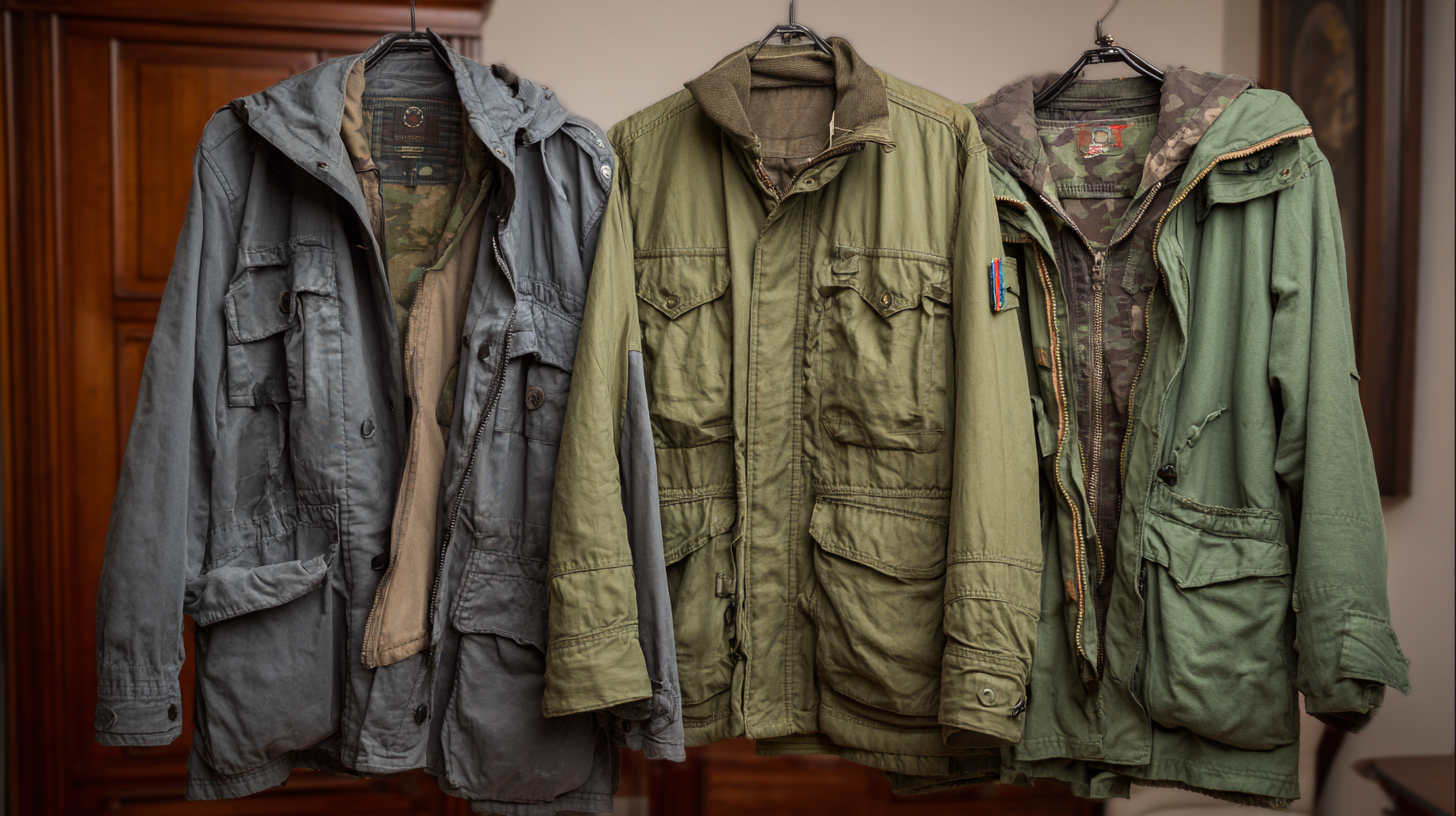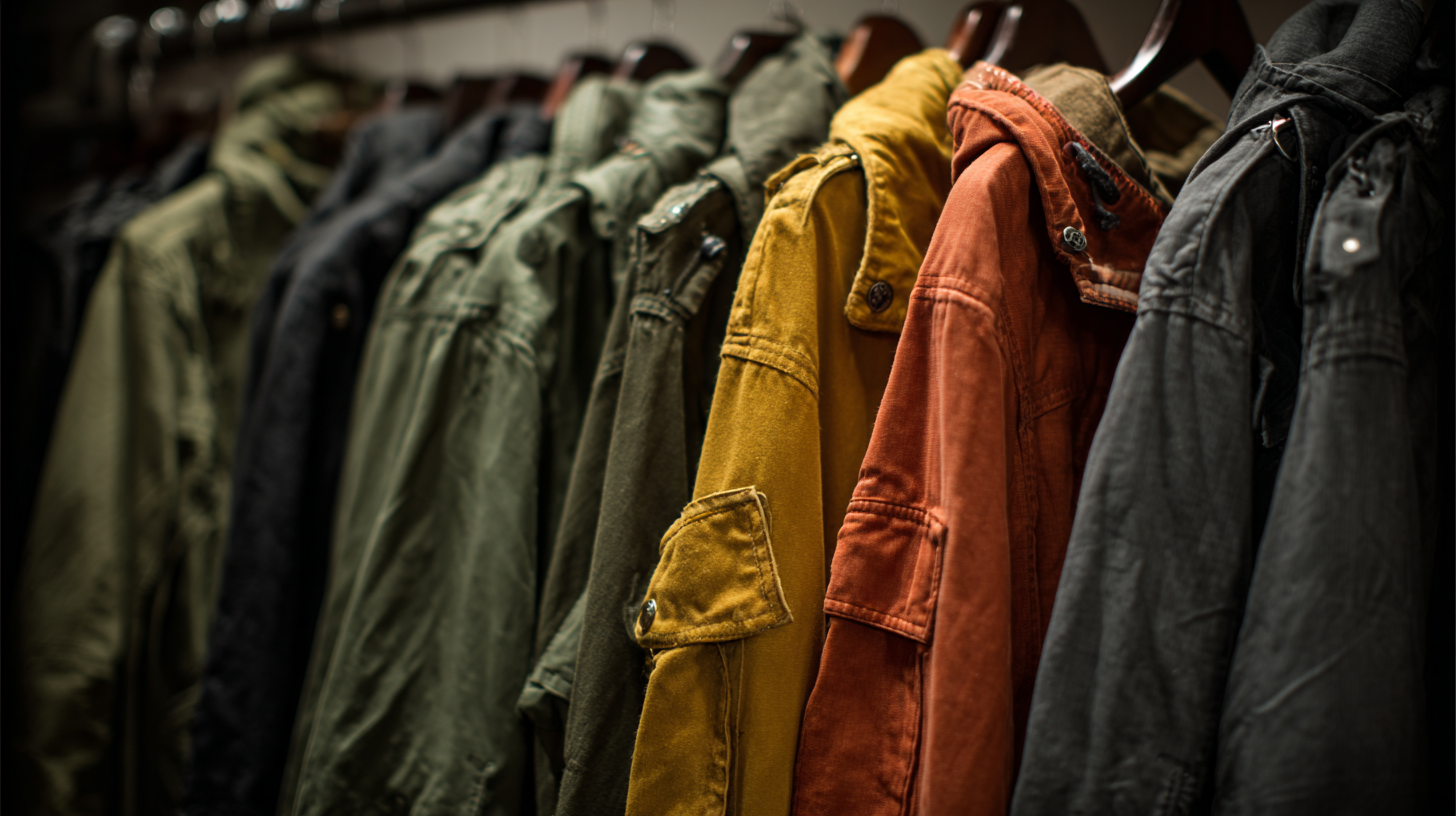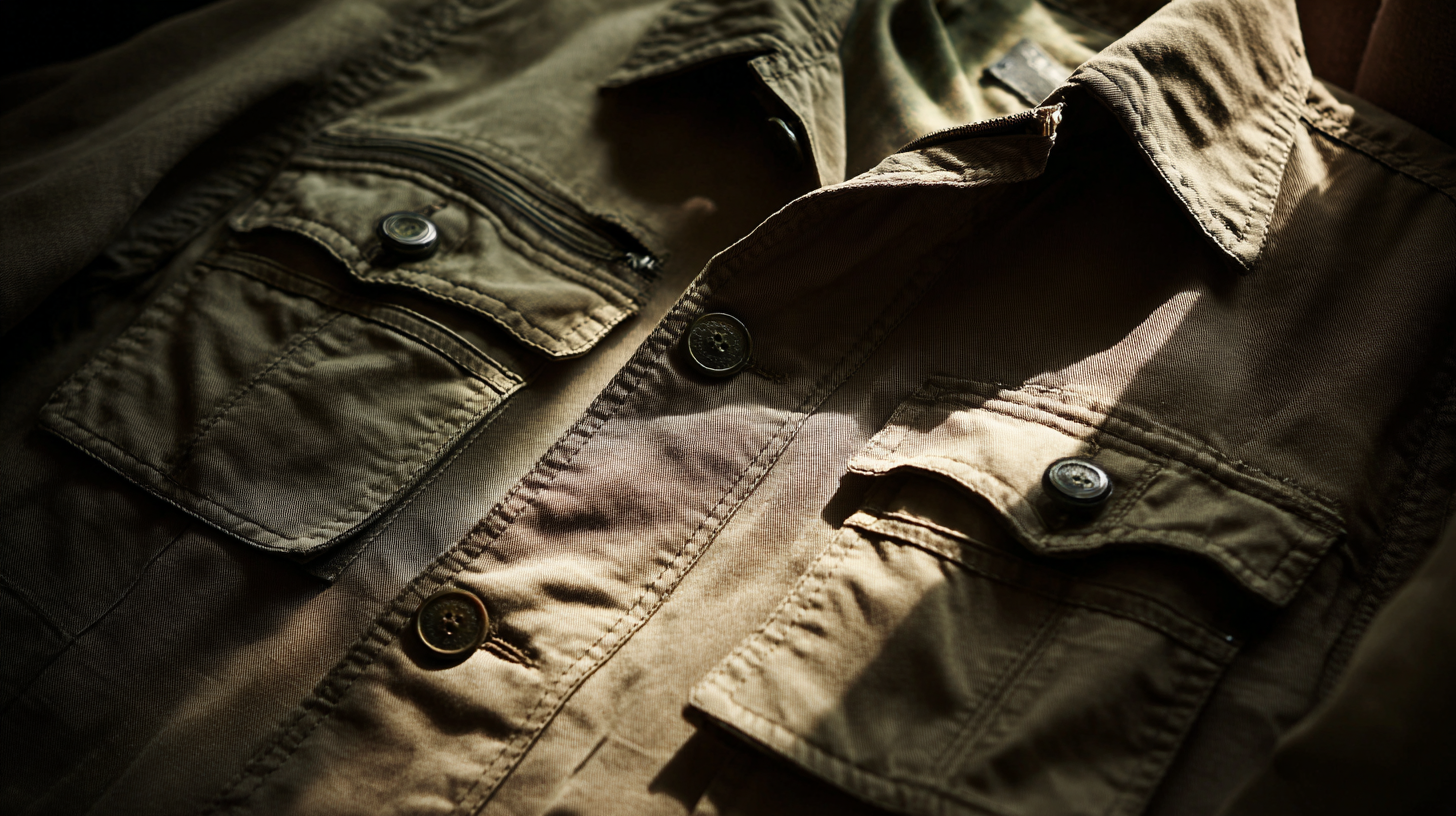Field jackets have become a staple in contemporary outerwear, blending functionality with style, making them an essential piece for both outdoor enthusiasts and urban dwellers alike. According to the Outdoor Industry Association, the outdoor apparel market has seen a steady growth rate of 3.5% annually, with field jackets gaining popularity due to their versatility and durability. Today's consumers seek jackets that not only offer protection against the elements but also complement their lifestyle and personal style. A field jacket, with its rich history rooted in military design, stands out as a practical choice, equipped with pockets for utility and constructed from materials that withstand various conditions. As we delve into this complete handbook, we aim to assist you in navigating the myriad of options available, ensuring that you find the perfect field jacket tailored to your specific needs, preferences, and intended uses.

The evolution of field jackets reflects a fascinating interplay between functionality, material advancements, and sustainability. In 2025, the demand for environmentally friendly fabrics in the outerwear sector surged by over 30%, according to a recent report by the Global Sustainable Apparel Coalition. Consumers are increasingly prioritizing garments made from recycled materials and organic fibers, pressured by both emerging environmental regulations and a heightened awareness of climate issues. The adoption of innovative materials, such as bio-based nylon and recycled polyester, has redefined the field jacket, enhancing its durability while significantly reducing its carbon footprint.
Moreover, brands have embraced sustainable manufacturing practices to meet consumer expectations. A study by Textile Exchange found that the use of eco-friendly processes not only reduces environmental impact but also improves brand loyalty, with 62% of respondents expressing a willingness to pay more for sustainable options. Consequently, field jackets are now designed not just for performance in diverse weather conditions but also with an ethos of sustainability at their core.
The integration of features like water-repellent finishes made from plant-based oils exemplifies this trend, pushing the boundaries of traditional outerwear into a futuristic realm where style and sustainability coexist harmoniously.

As we look ahead to 2025, understanding consumer preferences in the field jacket market becomes crucial for both buyers and brands. One significant trend is the rise of sustainably sourced materials. Today's consumers are more eco-conscious than ever, seeking jackets that not only perform well but also minimize environmental impact. Brands that incorporate recycled materials and ethical manufacturing processes are likely to gain a competitive edge.
**Tip:** When shopping for a field jacket, prioritize brands that provide transparency about their sourcing and manufacturing practices. This not only supports the environment but often results in higher quality, durable products.
Another emerging preference among consumers is the desire for versatility. Field jackets are moving beyond their traditional utility functions to become stylish options for everyday wear. Users look for jackets that can transition seamlessly from outdoor adventures to urban settings without sacrificing functionality.
**Tip:** Choose jackets with adjustable features, such as removable liners or packable designs, to adapt to varying weather conditions and occasions, ensuring maximum utility without compromising on style.
| Feature | Consumer Preference (%) | Price Range ($) | Material Preference (%) |
|---|---|---|---|
| Water Resistance | 78 | 80 - 150 | Polyester 40%, Cotton 30%, Nylon 30% |
| Breathability | 65 | 100 - 200 | Cotton 50%, Nylon 25%, Other 25% |
| Pocket Configuration | 72 | 60 - 120 | Blend 60%, Cotton 20%, Other 20% |
| Insulation | 50 | 70 - 160 | Synthetic 70%, Down 30% |
| Color Variety | 85 | 50 - 140 | Solid Colors 60%, Camo 40% |
When it comes to field jackets, traditional designs are evolving with the introduction of smart fabrics, which are revolutionizing outdoor apparel. These innovative textiles are engineered to enhance functionality and comfort, making them ideal for both casual adventurers and serious outdoor enthusiasts. Smart fabrics can respond to environmental changes, adjusting their properties based on conditions such as temperature and humidity. Imagine a field jacket that keeps you cool during a hot hike but warms you up when the temperature drops—that’s the power of modern technology at work.

In addition to temperature regulation, smart fabrics are often engineered to be moisture-wicking and breathable, ensuring that wearers remain dry and comfortable in various conditions. Some field jackets even incorporate built-in sensors that track physical activity, providing real-time feedback on performance. These features are not just about convenience; they enhance safety during outdoor activities by allowing users to monitor their exertion levels and vitality. The integration of smart fabrics in field jackets marks a significant shift towards more intelligent and adaptive clothing, catering to the needs of today's dynamic lifestyles.
When selecting a modern field jacket, one of the most critical aspects to consider is its performance metrics. Effectiveness can be measured through various factors, including durability, weather resistance, breathability, and insulation. A reliable field jacket should withstand rugged outdoor conditions while providing comfort to the wearer. For instance, checking the fabric's denier rating can give an insight into its strength and tear resistance, making it a fundamental metric for evaluating longevity.
Another essential aspect is temperature regulation, which relates to the jacket's insulation properties. Look for jackets that utilize advanced materials designed to wick moisture away from the body while retaining warmth. Additionally, testing the waterproof and windproof capabilities is vital; materials like Gore-Tex or similar technologies will offer superior protection against the elements. Effectiveness can also encompass functionality, including pocket placements and closures, which should provide easy access to essentials while on the move. By focusing on these performance metrics, you can ensure that the field jacket you choose meets your specific needs and enhances your outdoor experience.
As we look towards 2025, the future of field jackets appears promising, shaped by both innovative materials and changing consumer preferences. According to a recent report by Grand View Research, the global tactical outerwear market is expected to reach $3.9 billion by 2026, driven by an increasing demand for functional yet stylish apparel. This growth is largely influenced by the rise of outdoor activities, where consumers seek versatile clothing that can withstand various environments while providing comfort and durability.
Experts predict that sustainable materials will play a significant role in the evolution of field jackets. A survey conducted by the Fashion Institute of Technology indicated that over 60% of consumers are willing to pay more for eco-friendly options. Manufacturers are expected to embrace recycled fabrics and bio-based materials, leading to a significant decrease in environmental impact. Moreover, with advancements in technology, smart textiles integrated into field jackets—such as temperature-regulating fabrics and moisture-wicking properties—will become increasingly popular, catering to both outdoor enthusiasts and city dwellers alike.